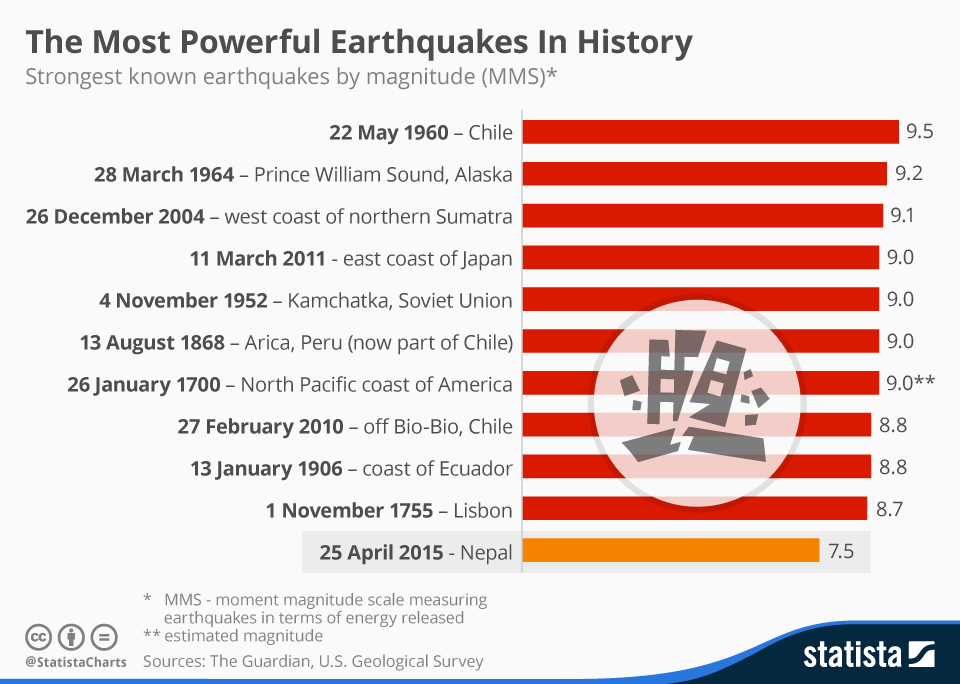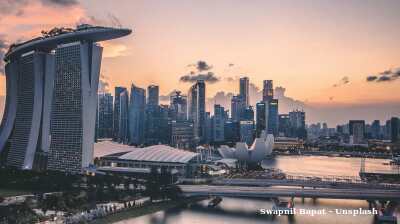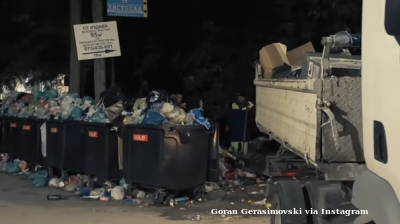Tsunami warnings have now been lifted across much of the Pacific following a major earthquake, which took place at 11:25 am local time on Wednesday, striking off the coast of Russia’s far eastern Kamchatka Peninsula. The quake was one of the top ten most powerful earthquakes recorded since 1900, with a magnitude of 8.8, Statista reports.
More than 1.9 million people in Japan had been ordered to evacuate, while tsunami warnings were issued across the Pacific, including in Russia, Hawaii, Alaska and the west coast of the United States. However, the tsunami damage was less severe than first feared, with waves measuring 5.7 feet (1.7m) in Hawaii’s Kahului in Maui, as California saw highs of 3.6 feet (1.1m) in Crescent City. Residents of the Marquesas Islands in French Polynesia were told on Wednesday that they could return to their homes after tsunami waves of 4.9 feet (1.5m) hit, which was lower than the earlier forecasts of up to 13 feet (4m).
As the following chart shows, the Pacific is a region particularly vulnerable to this type of natural disaster. This is due to the encircling “Pacific Ring of Fire,” formed by the colliding of different kinds of tectonic plates. At these subduction zones, the dense, oceanic plate is typically forced under the lighter continental plate. According to the British Geological Survey, 80 percent of the world's seismic activity takes place at the Ring of Fire, which can trigger devastating tsunamis.
U.S. Geological Survey (USGS) data shows that of the ten most powerful earthquakes ever recorded, two struck Chile (including the most powerful quake on record, which took place in Valdivia in 1960, with a magnitude of 9.5), while another two hit Alaska (1964 and 1965) and two more in Kamchatka (1952 and 2025).
 You will find more infographics at Statista
You will find more infographics at Statista
bneGREEN

TEHRAN BLOG: 200 days without rain
Tehran's water crisis is about decades of chaotic urban expansion, unregulated groundwater extraction, and infrastructure so decrepit that hundreds of millions of cubic metres vanish before reaching a single tap.

The Arctic and Antarctica record "off the charts" heat as polar warming accelerates
Parts of both the Arctic and Antarctic have experienced historically high temperatures in recent weeks, with weather stations in East Antarctica recording record-breaking warmth for the month of October, alarming climate scientists.

Giant glacier chunk breaks away in Tajikistan, mountain villages put on alert
Situation serves as reminder that climate crisis threatens to wreak havoc in Central Asian country.

Singapore’s green pivot – headline grabbing but still limited
Forays into offshore wind via regional cooperation with neighbours, and forward-looking bets on hydrogen and low-carbon fuels are making headlines, but the scale required to wean a heavily gas-dependent system off fossil fuels is still daunting.




